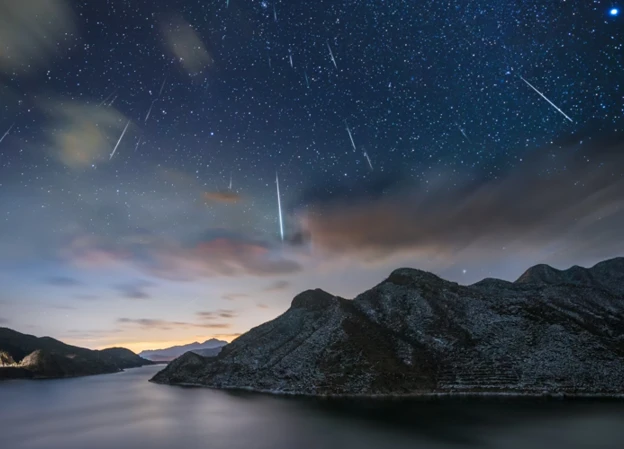Have you ever looked up at the night sky and witnessed a breathtaking meteor shower? These celestial phenomena have captivated humans for centuries, but have you ever wondered why they are named after specific constellations? It turns out that there is a fascinating connection between meteor showers and constellations that goes beyond mere coincidence. In this article, we will explore the historical origins, radiant point alignment, and visual association that explain why meteor showers are given names associated with specific constellations. We will also delve into the factors that influence meteor shower naming and the scientific significance they hold. So, sit back, relax, and prepare to unravel the mysteries of why meteor showers bear the names of constellations.
Contents
- The Connection between Meteor Showers and Constellations
- Popular Meteor Showers and Their Associated Constellations
- Factors Influencing Meteor Shower Naming
- Scientific Significance of Meteor Showers
- Conclusion
-
Frequently Asked Questions
- 1. Where do meteor showers get their names?
- 2. How do meteor showers get associated with specific constellations?
- 3. Why did ancient civilizations name meteor showers after constellations?
- 4. What is the significance of the radiant point in meteor showers?
- 5. Can meteor showers appear in multiple constellations?
- 6. Are meteor showers visible from all parts of the world?
- 7. How often do meteor showers occur?
- 8. Can meteor showers be predicted?
- 9. Are all meteor showers named after constellations?
- 10. Can the same meteor shower have different names?
- References
-
Frequently Asked Questions
- 1. Why are meteor showers named after specific constellations?
- 2. How are meteor shower names determined?
- 3. Are all meteor showers associated with constellations?
- 4. Do meteor showers always occur in the same location as their associated constellation?
- 5. Can we see meteors outside the radiant point of a meteor shower?
- 6. How are meteor showers named if they have multiple radiant points?
- 7. Do all meteor showers occur annually?
- 8. Can meteor shower names change over time?
- 9. Are there any famous meteor showers that are not associated with constellations?
- 10. Can meteor showers have multiple names?
- References
- Read More
The Connection between Meteor Showers and Constellations
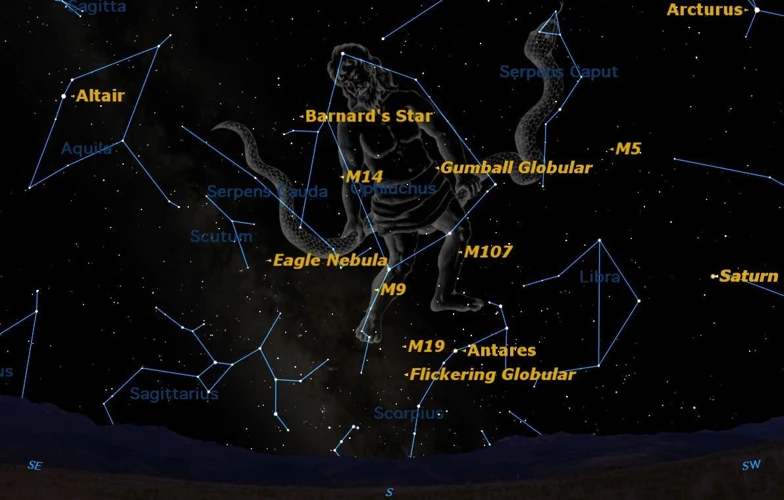
The connection between meteor showers and constellations goes back to their historical origins, radiant point alignment, and visual association. These three factors help explain why meteor showers are named after specific constellations. Historical Origins: The practice of naming meteor showers after constellations can be traced back to ancient civilizations such as the Greeks and the Romans. They believed that meteor showers were divine signs from the gods, and they associated them with the constellations that were prominent in the night sky during a particular time of the year. Norse mythology also played a role in the naming of meteor showers, as they believed that meteors were the sparks from the weapons of the gods. Radiant Point Alignment: Meteor showers appear to originate from a specific point in the sky called the radiant point. The radiant point is determined by the trajectory of the meteor shower’s parent comet or asteroid. This point often aligns with or is near a particular constellation, leading to the association between the meteor shower and that constellation. Visual Association: When we observe meteor showers, the meteors often appear to streak across the sky in the direction of a specific constellation. This visual association between the meteor shower and the constellation further strengthens the connection and influence on naming. The connection between meteor showers and constellations is a complex interplay of historical beliefs, celestial alignment, and visual perception. It adds a fascinating layer of mystique to our understanding of these awe-inspiring celestial events.
1. Historical Origins
The historical origins of naming meteor showers after constellations are rooted in ancient cultures’ beliefs about celestial events. The Greeks and Romans, for example, attributed meteor showers to divine intervention and regarded them as signs from the gods. These civilizations associated meteor showers with specific constellations that were prominent in the night sky during a given time of the year. This practice was influenced by the belief that the gods communicated their intentions through celestial phenomena. In Norse mythology, meteors were considered sparks from the weapons of the gods, further emphasizing the connection between meteor showers and celestial beings. These ancient beliefs and mythologies laid the foundation for the naming traditions that continue to this day. The historical origins of linking meteor showers to constellations offer a glimpse into the fascinating interplay between ancient beliefs, celestial events, and human interpretation. It highlights the importance of celestial events in shaping cultural and mythological narratives. Astrology and its association with constellations also played a role in understanding and interpreting meteor showers in various cultures throughout history.
2. Radiant Point Alignment
Radiant Point Alignment: The alignment of the radiant point is a crucial factor in determining why meteor showers are named after specific constellations. The radiant point is the spot in the sky from which the meteors of a particular shower appear to originate. It is not the actual location of the meteors, but rather the perspective from which they seem to radiate. The trajectory of a meteor shower is determined by the path of its parent comet or asteroid as it orbits the Sun. As the Earth passes through the debris left behind by the parent body, the debris enters our atmosphere and burns up, creating the mesmerizing streaks of light we observe as meteors. The radiant point is typically named after the constellation nearest to it, providing a way to associate the meteor shower with that particular group of stars. For example, the famous Perseid meteor shower, known for its stunning display each August, gets its name from the constellation Perseus. The radiant point of the Perseids is located near the border of Perseus, and the meteors appear to radiate outwards from that point. This alignment between the radiant point and the constellation allows astronomers and stargazers to identify and name the meteor shower accordingly. Understanding the radiant point alignment is essential in comprehending why meteor showers are linked to specific constellations. It helps establish the visual connection between the shower and its associated constellation, creating a harmonious relationship between the two in our perception of the celestial wonders above.
3. Visual Association
Visual association plays a significant role in the connection between meteor showers and constellations. When we observe meteor showers, the meteors often appear to streak across the sky in the direction of a specific constellation. This visual alignment enhances the connection and influence on naming. Imagine lying on a grassy field, gazing up at the night sky during a meteor shower. As the meteors streak across the darkness, they seem to converge towards a particular constellation, creating a breathtaking spectacle. This visual association is not only captivating but also reinforces the connection between the meteor shower and the constellation in our minds. It allows us to easily identify and remember the meteor shower by its associated constellation, perpetuating the tradition of naming meteor showers after specific constellations. This phenomenon also sparks curiosity and a desire to learn more about the constellations themselves, inviting individuals to explore the wonders of the night sky and perhaps delve into the realm of astrology. Through this visual association, meteor showers and constellations become intricately intertwined, heightening the enchantment and fascination surrounding these celestial events.
Popular Meteor Showers and Their Associated Constellations
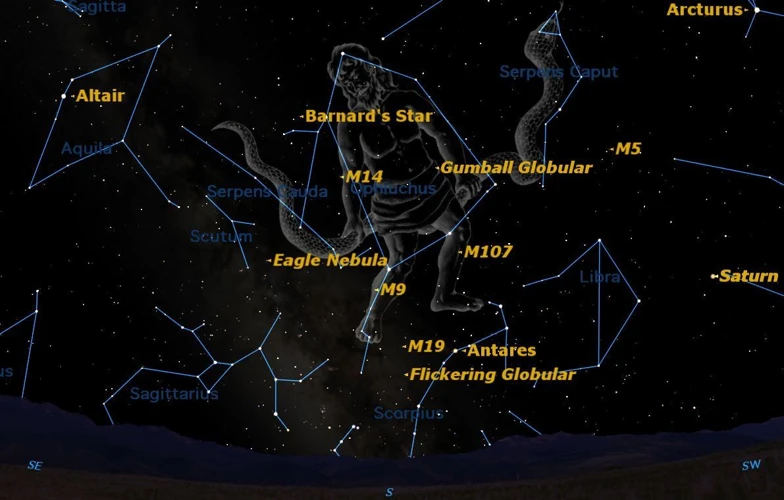
Popular meteor showers have become synonymous with the constellations they are associated with. Let’s explore some of the most well-known meteor showers and their corresponding constellations. Perseids – Perseus Constellation: The Perseids meteor shower, which occurs every year between July and August, is famously associated with the Perseus constellation. This connection is due to the fact that the radiant point of the meteor shower lies near the star Algol, which is one of the brightest stars in the Perseus constellation. Geminids – Gemini Constellation: The Geminids meteor shower, known for its impressive activity in mid-December, is associated with the Gemini constellation. The radiant point of the Geminids is situated near the star Castor, one of the brightest stars in Gemini. Orionids – Orion Constellation: The Orionids meteor shower, visible in October, is linked to the Orion constellation. The radiant point of the Orionids is located near the star Betelgeuse, a prominent star in the shoulder of the Orion constellation. These examples demonstrate how meteor showers have come to be named after the constellations in close proximity to their radiant points. As you observe these meteor showers, keep an eye out for the incredible connection they have with their associated constellations.
1. Perseids – Perseus Constellation
The Perseids meteor shower, named after the Perseus constellation, is one of the most well-known and highly anticipated meteor showers. It occurs annually in August when Earth passes through the debris left behind by the Comet Swift-Tuttle. The association between the Perseids meteor shower and the Perseus constellation comes from the direction in which the meteors appear to originate. If you trace the paths of the Perseids back, they seem to radiate from a point near the constellation Perseus, specifically from its radiant point, known as the “Radiator.” This radiant point alignment is a result of the Earth passing through the debris trail left by Comet Swift-Tuttle, which intersects with the orbit of the Earth at this specific location. The Perseids are known for their fast and bright meteors, often leaving trails in the sky, making them a spectacular sight for stargazers. The Perseus constellation itself represents the hero Perseus from Greek mythology, known for slaying the monstrous Medusa. The celestial connection between the Perseids meteor shower and the Perseus constellation adds a touch of mysticism and intrigue to the shower, making it a favorite among astronomy enthusiasts.
2. Geminids – Gemini Constellation
The Geminids meteor shower is one of the most spectacular meteor showers of the year, and it is named after the Gemini constellation. This meteor shower typically occurs annually in mid-December, reaching its peak around December 13th and 14th. Gemini Constellation: The Gemini constellation is represented by the mythological twins Castor and Pollux. It is located in the northern celestial hemisphere and is easily recognizable due to its two prominent stars, Castor and Pollux. The radiant point of the Geminids meteor shower is located near the bright star Castor in the constellation, which gives it its name. Characteristics: The Geminids meteor shower is known for its vibrant and numerous meteors, with an average peak rate of around 120 meteors per hour. These meteors are often bright and slow-moving, making them a spectacular sight for observers. The Geminids are unique because they are not associated with a comet but are instead caused by debris from an asteroid named 3200 Phaethon. Observing Tips: To observe the Geminids meteor shower, find a dark location away from city lights and look towards the constellation Gemini during the peak nights. Patience is key, as it can take some time for your eyes to adjust to the darkness. Bundle up to stay warm, and enjoy the show as streaks of light from the Geminids illuminate the night sky.
3. Orionids – Orion Constellation
The Orionids meteor shower is one of the well-known meteor showers that is associated with the Orion constellation. The name “Orionids” comes from the fact that the radiant point of this meteor shower is located near the constellation Orion. Timing: The Orionids typically occur every year from around October 2nd to November 7th, with the peak activity usually happening around October 20th. Parent Comet: The Orionids are caused by debris left behind by Halley’s Comet, also known as 1P/Halley. As Earth orbits the Sun, it passes through the trail of particles left by the comet. When these particles enter Earth’s atmosphere and burn up, they create the beautiful streaks of light that we see as meteors. Characteristics: The Orionids are known for producing fast-moving meteors that can be yellow or green in color. They have been observed to reach speeds of up to 148,000 miles per hour (238,000 kilometers per hour) as they enter Earth’s atmosphere. Observation Tips: To view the Orionids, it is best to find a location away from city lights with a clear view of the sky. Be patient and allow your eyes to adjust to the darkness. Look towards the constellation Orion, particularly towards the area around the bright star Betelgeuse. While the Orionids may not be as prominent as other meteor showers, they still offer a captivating celestial display for skywatchers each year.
Factors Influencing Meteor Shower Naming
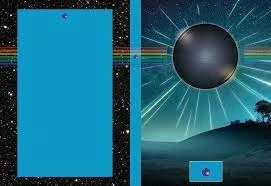
Factors influencing meteor shower naming are varied and can include the brightest stars in the associated constellation, timing and position in the night sky, and cultural and mythological significance. Brightest Stars in the Associated Constellation: One factor that plays a role in meteor shower naming is the presence of bright stars within the constellation to which the shower is associated. These stars often have names that are well-known and easily recognizable. For example, the Perseids meteor shower is named after the constellation Perseus, which features the prominent star called Mirfak. Timing and Position in the Night Sky: The timing and position of a meteor shower in the night sky also influence its naming. Meteor showers that occur during specific months or times of the year may be associated with particular constellations that are visible during those periods. The Leonids, for instance, are named after the constellation Leo because they appear to radiate from that area of the sky during November. Cultural and Mythological Significance: Cultural and mythological associations linked to a constellation can also influence the naming of a meteor shower. For example, the Orionids meteor shower is named after the constellation Orion, known for its association with the mythical Greek hunter Orion. The mythological stories and cultural significance associated with constellations provide a rich narrative and connection to meteor showers. Factors such as the brightest stars, timing and position in the night sky, and cultural and mythological significance all contribute to the naming of meteor showers and the connection with their associated constellations.
1. Brightest Stars in the Associated Constellation
When it comes to factors influencing the naming of meteor showers, one important aspect is the presence of the brightest stars within the associated constellation. These stars play a significant role in the visibility and recognition of the meteor shower. The brightness of these stars can vary, ranging from first magnitude stars like Sirius or Vega, to fainter stars that may only be visible under optimal viewing conditions. Astronomers and stargazers often take into account the prominence and visibility of these stars within the constellation when naming meteor showers. The association with the brightest stars adds a sense of importance and distinction to the meteor shower, as it enhances the overall celestial experience. These brighter stars also help in locating the radiant point, making it easier for observers to track the pathway of the meteor shower in the night sky. The presence of these stellar landmarks within the associated constellation contributes to the naming process and further enriches the celestial connection between meteor showers and constellations.
2. Timing and Position in the Night Sky
Timing and Position in the Night Sky: Another important factor in naming meteor showers after specific constellations is the timing and position of the shower in the night sky. Meteor showers occur at predictable times each year, and their peak activity is often associated with a specific constellation. For example, the Perseid meteor shower, one of the most well-known meteor showers, peaks in mid-August and is associated with the Zodiac sign of Perseus. During the peak of the shower, the radiant point of the meteors aligns with the constellation of Perseus, making it appear as if the meteors are originating from that specific constellation. This alignment enhances the visual connection between the meteor shower and the constellation in the eyes of observers. The position of the meteor shower in the night sky also plays a role in its association with a particular constellation. Meteor showers that are visible in a specific region of the sky, close to a specific constellation, are more likely to be named after that constellation. The timing and position of meteor showers in the night sky contribute to the specific associations with constellations, adding to the uniqueness and fascination of these celestial events.
3. Cultural and Mythological Significance
Cultural and mythological significance plays a crucial role in naming meteor showers after specific constellations. Throughout history, various cultures and societies have assigned different meanings to celestial events and constellations, weaving them into their myths, legends, and belief systems. This cultural and mythological significance influences the naming of meteor showers in several ways.
Ancient Beliefs: Many ancient civilizations connected meteor showers with significant events, omens, or divine messages. For example, the Perseids meteor shower, named after the Perseus constellation, is associated with the heroic figure of Perseus from Greek mythology. The Geminids, named after the Gemini constellation, have ties to the myth of Castor and Pollux, the twin brothers in Greek and Roman mythology. These mythological associations contribute to the cultural significance and naming of meteor showers.
Folklore and Superstitions: Folklore and superstitions surrounding meteor showers have also influenced their naming. In some cultures, meteor showers were seen as signs of good luck, fertility, or impending doom. These beliefs and tales have been passed down through generations, further cementing the connection between meteor showers and constellations in popular culture.
Mythical Creatures: Certain constellations associated with meteor showers are connected to mythical creatures in various mythologies. For example, the Orionids meteor shower, named after the Orion constellation, is often linked to the mighty hunter Orion in Greek mythology. Odin’s Wild Hunt, a mythological event in Norse mythology, is connected to the Orionids meteor shower. These mythical connections lend a sense of wonder and mysticism to the naming of meteor showers.
The cultural and mythological significance intertwined with meteor showers and their associated constellations adds depth and storytelling to these celestial phenomena. They provide a rich tapestry of human imagination, belief systems, and historical context that make observing meteor showers a truly captivating experience.
Scientific Significance of Meteor Showers
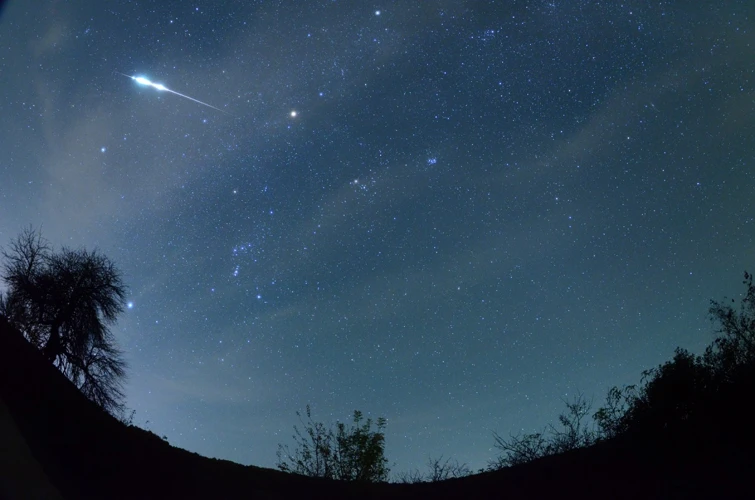
Meteor showers hold significant value in scientific research and provide valuable insights into various areas of study. Let’s explore the scientific significance of meteor showers in detail:
1. Study of Comet Debris: Meteor showers occur when the Earth’s orbit intersects with the debris left behind by a comet or asteroid. By studying the composition and characteristics of the meteoroids, scientists can gain insights into the parent bodies and their formation. This information helps in understanding the origins and evolution of comets and asteroids in our solar system.
2. Atmospheric and Celestial Research: When meteoroids enter the Earth’s atmosphere, they create luminous streaks of light known as meteors. The study of these meteors helps scientists gather crucial data about the Earth’s atmosphere, such as its composition, density, and temperature. Additionally, observing and tracking meteor showers allows astronomers to study the motion and dynamics of celestial objects in our solar system.
3. Cosmic Dust Collection: During meteor showers, small particles of cosmic dust, known as micrometeorites, reach the Earth’s surface. These micrometeorites provide scientists with an opportunity to study extraterrestrial material and gain insights into the early formation of the solar system. By analyzing the composition of these particles, scientists can learn about the elemental composition and processes that occurred during the formation of our solar system.
4. Space Weather and Planetary Defense: Meteor showers play a role in understanding space weather and its potential impact on Earth. By studying the behavior and characteristics of meteor showers, scientists can better predict and prepare for potential threats posed by larger meteoroids or asteroids. This research contributes to our understanding of planetary defense strategies and safeguards against potential impacts.
Meteor showers hold immense scientific significance, enabling researchers to unravel the mysteries of our solar system, study the Earth’s atmosphere, collect extraterrestrial samples, and enhance our understanding of space weather and potential threats to our planet. Their study continues to contribute to advancements in various fields of scientific research.
1. Study of Comet Debris
The study of comet debris is a significant scientific aspect of meteor showers. When a comet passes through the inner solar system, it leaves behind a trail of dust and debris. Meteor showers occur when the Earth’s orbit intersects with this debris field, causing the particles to enter our atmosphere and burn up, creating the beautiful streaks of light we observe. The naming of meteor showers after the associated constellations allows scientists to track and identify specific streams of debris and study their composition. By analyzing the chemical and physical properties of these particles, scientists can gain insights into the composition and behavior of comets. This information helps deepen our understanding of the solar system’s formation and evolution. It also provides valuable data for studying the potential impact hazard from comets and asteroids, aiding in our efforts to protect Earth from potential cosmic threats. The study of comet debris through meteor showers is an essential avenue of scientific research that the naming convention helps facilitate.
2. Atmospheric and Celestial Research
2. Atmospheric and Celestial Research: Meteor showers have significant scientific significance, particularly in the fields of atmospheric and celestial research. The study of meteor showers allows scientists to gather valuable data about the composition and behavior of Earth’s atmosphere. As meteors burn up upon entry into the atmosphere, they release energy and produce ionized trails. By observing these trails, scientists can analyze the chemical composition of the meteor and the surrounding atmosphere. This provides insights into the presence of various elements and compounds in Earth’s atmosphere. Additionally, the phenomenon of meteor showers provides a unique opportunity for scientists to study the interaction between the meteoroids and the Earth’s atmosphere, allowing them to better understand atmospheric dynamics and meteoroid behavior. Meteor showers also hold significance in the study of celestial bodies and their movements. The radiant point, from which the meteor shower appears to originate, can provide valuable information about the orbit and trajectory of the comet or asteroid that is responsible for the meteor shower. This data aids astronomers in tracking and predicting the movement of these celestial bodies. The observation of meteor showers allows scientists to determine the velocity and direction of the meteoroids, shedding light on the dynamics of objects within our solar system. Meteor showers serve as a vital source of information for atmospheric and celestial research, contributing to our understanding of Earth’s atmosphere and the celestial bodies that populate our galactic neighborhood.
Conclusion

In conclusion, the naming of meteor showers after specific constellations is a result of historical origins, radiant point alignment, visual association, and various other factors. Ancient civilizations attributed divine significance to meteor showers, which led to the association of these celestial events with the constellations that were prominent during their occurrence. The alignment of the radiant point, which is determined by the parent comet or asteroid, often coincides with or is close to a specific constellation. Additionally, the visual association of meteors streaking across the sky in the direction of a constellation further solidifies the connection. Factors such as the brightest stars in the associated constellation, timing and position in the night sky, and cultural and mythological significance also influence the naming of meteor showers. These captivating celestial events not only provide a visual spectacle but also hold scientific significance, aiding in the study of comet debris and contributing to atmospheric and celestial research. The connection between meteor showers and constellations adds a layer of intrigue and wonder to our exploration of the night sky.
Frequently Asked Questions

1. Where do meteor showers get their names?
Meteor showers are named after the constellation from which they appear to originate. This is known as the radiant point, and it is the point in the sky where the meteors appear to be coming from.
2. How do meteor showers get associated with specific constellations?
Meteor showers become associated with specific constellations because their radiant points align with or are near those constellations. The trajectory of the meteor shower’s parent comet or asteroid determines the location of the radiant point.
3. Why did ancient civilizations name meteor showers after constellations?
Ancient civilizations believed that meteor showers were divine signs or messages from the gods. They associated these celestial events with the constellations that were prominent in the sky during the time of the meteor shower.
4. What is the significance of the radiant point in meteor showers?
The radiant point is the point in the sky from which the meteors in a meteor shower appear to originate. It helps astronomers track the path of the meteors and determine the association with a specific constellation.
5. Can meteor showers appear in multiple constellations?
Yes, it is possible for meteor showers to appear in multiple constellations. This can occur when the radiant point is located between two or more constellations or when the shower is spread out across the sky.
6. Are meteor showers visible from all parts of the world?
Yes, meteor showers can be visible from all parts of the world, as long as the sky is clear and free from light pollution. However, the visibility and intensity of the meteor shower may vary depending on the observer’s location on Earth.
7. How often do meteor showers occur?
Meteor showers occur at specific times throughout the year. Some showers are annual, meaning they happen around the same date each year, while others are periodic and happen at regular intervals associated with the parent comet’s orbit.
8. Can meteor showers be predicted?
Yes, meteor showers can be predicted based on the orbit of the parent comet or asteroid. Astronomers use mathematical models to calculate when and where the meteor shower will peak, allowing enthusiasts to plan their observations.
9. Are all meteor showers named after constellations?
No, not all meteor showers are named after constellations. Some are named after the location or event that is associated with the meteor shower, while others are named after the person or group of people who discovered them.
10. Can the same meteor shower have different names?
No, once a meteor shower has been named, it usually retains that name. However, some meteor showers are known by different names depending on different cultural or regional interpretations.
References
Frequently Asked Questions

1. Why are meteor showers named after specific constellations?
Meteor showers are named after specific constellations to indicate the region of the sky from which the meteors appear to originate. This region is known as the radiant point.
2. How are meteor shower names determined?
Meteor shower names are often derived from the name of the constellation in which the radiant point is located. Sometimes, they are named after the nearest bright star or prominent object in that constellation.
3. Are all meteor showers associated with constellations?
No, not all meteor showers are associated with constellations. Some showers, like the Draconids and the Orionids, are named after the constellation they appear near, but not directly associated with.
4. Do meteor showers always occur in the same location as their associated constellation?
No, meteor showers can be observed from various locations on Earth. The radiant point, however, will always appear to be originating from the same general area of the sky associated with the constellation.
5. Can we see meteors outside the radiant point of a meteor shower?
Yes, meteors from a meteor shower can be seen outside the radiant point. The radiant point simply indicates the direction from which the meteors appear to be coming, but they can streak across various parts of the sky.
6. How are meteor showers named if they have multiple radiant points?
If a meteor shower has multiple radiant points, it is usually named after the constellation that encompasses the majority of the radiant points or the brightest one among them.
7. Do all meteor showers occur annually?
No, not all meteor showers occur annually. While some showers are reliable and occur around the same time each year, others might have irregular or sporadic appearances.
8. Can meteor shower names change over time?
While rare, meteor shower names can change over time if new information becomes available or if the scientific understanding of the shower’s origin evolves. However, once a name becomes established, it tends to stick.
9. Are there any famous meteor showers that are not associated with constellations?
Yes, one famous example is the Perseids meteor shower. Although it is named after the Perseus constellation, its radiant point is actually located near the Cassiopeia constellation.
10. Can meteor showers have multiple names?
No, meteor showers typically have one primary name that is widely recognized. However, they might also have alternative names that are used regionally or by specific scientific groups.

